Rippon Boswell’s Spring sale of Carpets & Textiles, Wiesbaden 31 May 2014
Part of a ‘Bukhara’ Saf (multi-niche prayer carpet)
Highest expectations in Rippon Boswell’s Spring sale in Wiesbaden on Saturday 31 May 2014 rest on this large, colourful and highly collectable fragment from a ‘Bukhara’ carpet with multiple rows of niches (lot 96, estimate €65,000). A selection of additional highlights is included in the accompanying album.
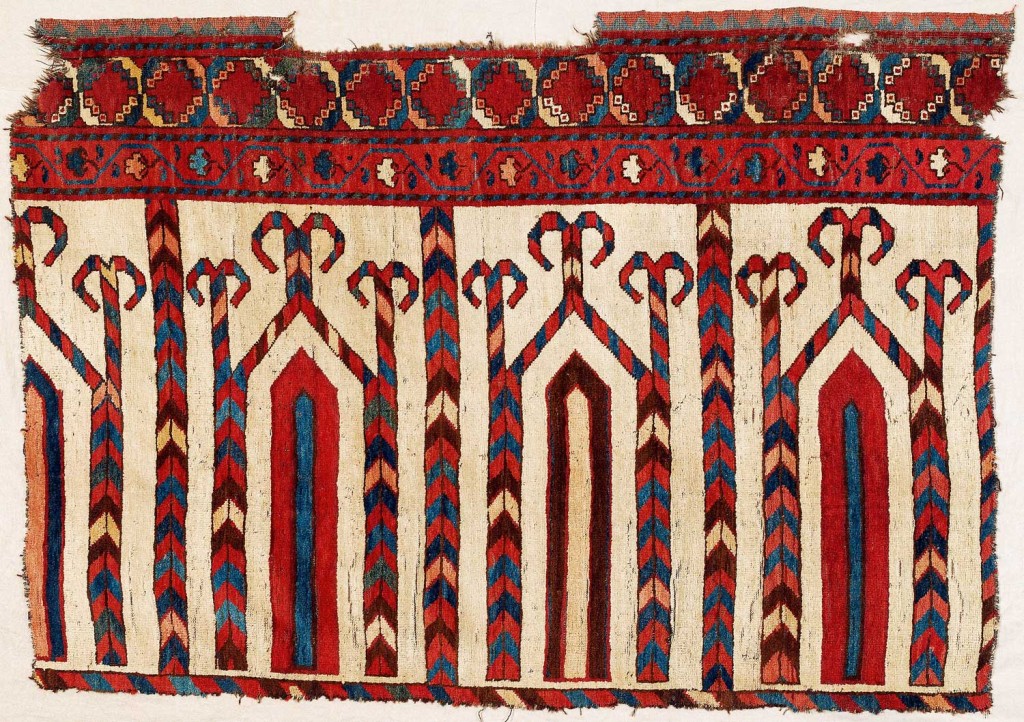
Lot 96. ‘Bukhara’ saf section, Uzbekistan, mid-1880s. 147 x 209 cm. Rippon Boswell Wiesbaden, 31 May 2014, estimate €65,000
While there are a few single-row Middle Amu Darya region (‘Beshir’) safs, this is a very different creature. At least three further substantial fragments from the same carpet are known, two of them (joined) now in the Magaki Attari Mosque Museum in Bukhara (Moshkova/O’Bannon, Carpets of the People of Central Asia, 1996, cover and fig.129), and a third published in Bausback of Mannheim’s 75th anniversary catalogue (2000, p.192). According to George O’Bannon, quoting the curator of the MAM, the Bukhara saf section comes from a carpet commissioned in 1874 by Emir Muzaffar (r. 1860-1885) for the Bala Hauz Mosque in Bukhara. Said to have measured a highly improbable 36 x 18 metres, it was woven in Bukhara city by 18 Turkmen (presumably Ersari) from Charjui and two Uzbeks from nearby Shahkrikhan, and took a full year to complete. Then, in the 1920s, following the Bolshevik Revolution, it was cut into pieces by ‘the populace’ and dispersed. The RB fragment appears to come from the upper register of niches seen on the MAM section, while the Bausback fragment is from the lower register.
In addition, we know of at least two further fragmented sections of a very similar, but not identical saf, which in all likelihood pre-dates the MAM, Bausback and RB fragments. Among other differences, on these two earlier fragments, the mihrab outlines have a saw-tooth ‘fringe’ absent from the Bukhara pieces, the vertical chevrons point down rather than up, and the individual niches are separated by a Persianate vine meander border rather than merely the simple chevron pattern. The first of these fragments was sold at Sotheby’s in London in April 1998 for £56,500/$94,355 (HALI 99, pp.127-8). Its ground is severely worn and is ‘white’ only by courtesy. It also looks substantially older than the Bukharan fragments, and the design has features in common with the famous Dudin collection white-ground MAD/Ersari prayer rug in the Russian Ethnographic Museum, St Petersburg (HALI 27, 1985, p.14). The second, itself pieced together from three clearly defined fragments, quite possibly contiguous at one time, but which had each visibly lived a very different life since the carpet was dismembered, fetched £17,925/$27,730 at Christie’s in London in October 2002 (HALI 126, p.135).
Although such judgements are inevitably influenced by condition, it seems likely that the design of the Bukhara carpet copied that of an older saf. The discovery of remnants of a second very large saf, very similar to that from the Bukhara mosque, adds weight to the idea that rather than having been designed for a particular building, both are examples of a traditional mosque furnishing.


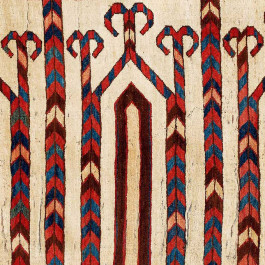
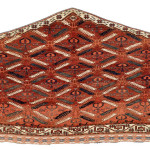
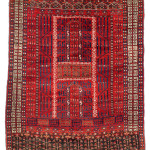
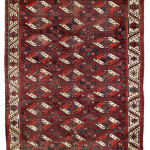


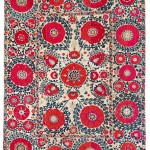

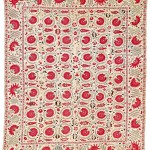
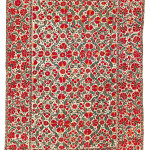


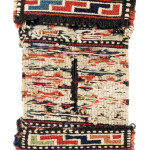
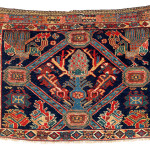

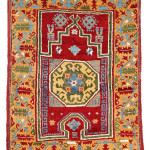
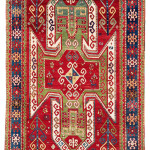
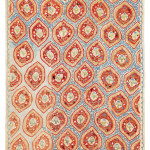


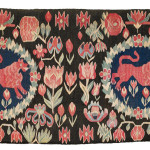
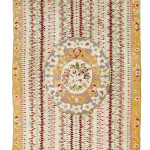
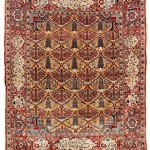
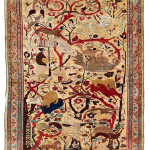
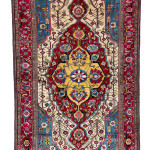
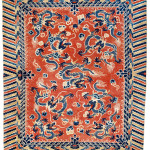



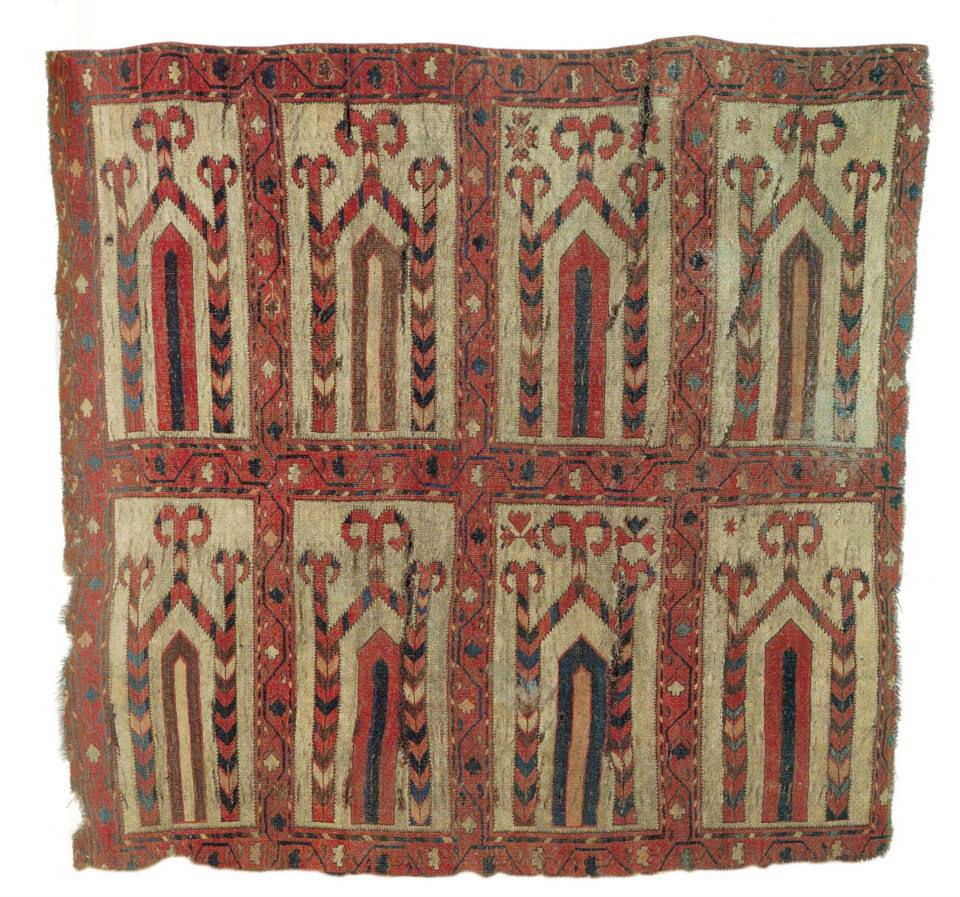
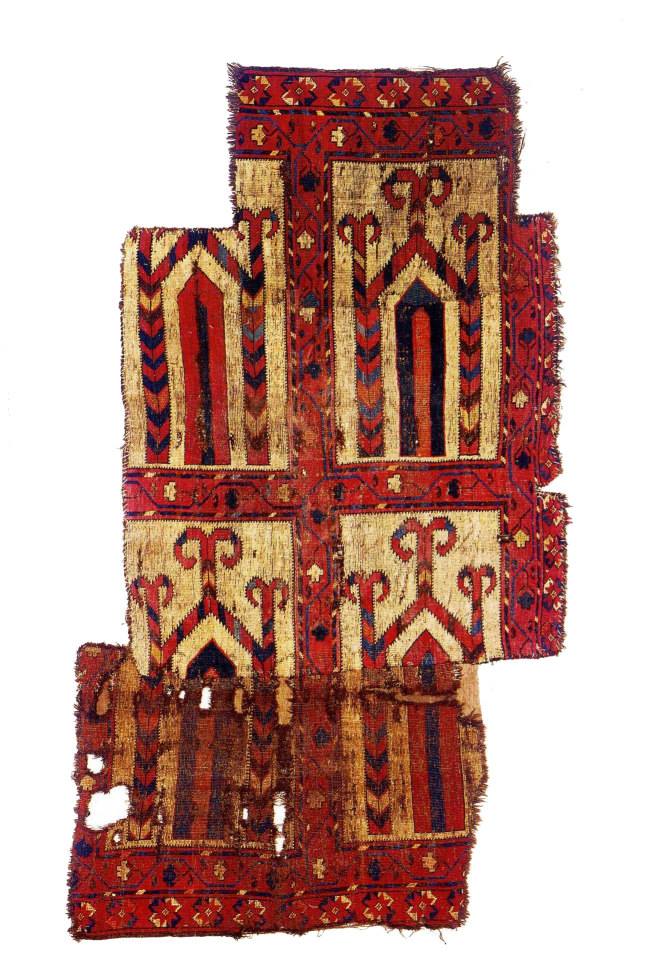





















Comments [0] Sign in to comment